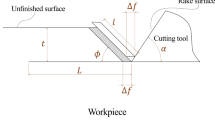Abstract
Electronic devices must be quiet during manipulation for operations. In addition, the sounds need to show distinct impression to satisfy the user’s auditory experience and indicate the completion of an operation. The sounds occur in a short time from frictional contact and the consequent structural vibration when a user operates a device. In this study, the impact sound during printer cassette insertion is analyzed. The rail vibration during closure movement generates continuous sound. This movement ends with the impact sound from contact between the cassette and printer body. The sounds occur as clicking sounds with double impacts separated by a short interval. This clicking sound is important serving as an indicator of completed insertion. The user’s perception of this complex sound is investigated. A physical index to quantify the generated sound is proposed to assist comparisons between printers. Prony’s method was used to characterize the sound features including duration, double impact interval, magnitudes, and decay rates. From the extracted features, artificial clicking sounds were simulated for sound quality evaluations. Auditory experiments were performed to investigate the user’s preference for the separated rail and impact noises. The just noticeable difference was defined to classify the important factors influencing the perception characteristics.
Similar content being viewed by others
References
A. Fenko, H. N. J. Schifferstein and P. Hekkert, Shifts in sensory dominance between various stages of user-product interactions, Appl. Ergon., 41 (2010) 34–40, Doi: 10.1016/j.apergo. 2009.03.007.
S. Namba, T. Hashimoto and C. G. Rice, The loudness of decaying impulsive sounds, J. Sound Vib., 116 (1987) 491–507, Doi: 10.1016/S0022-460X(87)81380-9.
E. Parizet, E. Guyader and V. Nosulenko, Analysis of car door closing sound quality, Appl. Acoust., 69 (2008) 12–22, Doi: 10.1016/j.apacoust.2006.09.004.
M. Hoechstetter, J. M. Sautter, U. Gabbert and J. L. Verhey, Role of the duration of sharpness in the perceived quality of impulsive vehicle sounds, Acta Acust. United with Acust., 102 (2016) 119–128, Doi: 10.3813/AAA.918929.
H. Jo, W. Seong, H. Lee, S. Kim, D. Park and Y. June, A study on sound quality evaluation index of car door latch and improving sound quality by modifying door latch assembly design, Inter-Noise 2014 (2014) 1–8.
D. Hamilton, Sound quality of impulsive noises: An applied study of automotive door closing sounds, SAE Technical Paper 1999–01–1684 (1999) Doi: 10.4271/1999–01–1684.
D. Västfjäll, M.-A. Gulbol, M. Kleiner and T. Gärling, Affective evaluations of and reactions to exterior and interior vehicle auditory quality, J. Sound Vib., 255 (2002) 501–518, Doi: 10.1006/jsvi.2001.4166.
S. H. Park and P. J. Lee, A qualitative study of annoyance caused by floor impact sounds in apartment buildings, Eu-roNoise 2015, 31 May — 3 June, Maastricht (2015).
B. Park, J. Y. Jeon and J. Park, Force generation characteristics of standard heavyweight impact sources used in the sound generation of building floors, J. Acoust. Soc. Am., 128 (2010) 3507–3512.
S. Lee, D. Hwang, J.-Y. Jeon and J. Park, Cause and perception of amplitude modulation of heavy — weight impact sound in concrete wall structure, Build Environ., 94 (2015) 785–792.
Y. Kwak, S. Lee, J. Park, D. Hwang, J. Y. Jeon and J. Park, Effect of the static compressive load on vibration propagation in multistory buildings and resulting heavy-weight floor impact sounds, J. Acoust. Soc. Am., 142 (2017) 308–316, https://doi.org/10.1121/1.4994290.
J. R. Robertsa, R. Jonesa, N. J. Mansfieldb and S. J. Rothberga, Evaluation of impact sound of the ‘feel’ of a golf shot, J. Sound Vib., 287 (2005) 651–666.
J. Gaspar, M. Fontul, E. Henriques, A. Ribeiro and N. Val-verde, Psychoacoustics of incar switch buttons: from feelings to engineering parameters, Appl. Acoust., 110 (2016) 280–296, Doi: 10.1016/j.apacoust.2016.03.037.
T. Wellings, M. Williams and C. Tennant, Understanding customers’ holistic perception of switches in automotive human-machine interfaces, Appl. Ergon., 41 (2010) 8–17, Doi: 10.1016/j.apergo.2009.03.004.
J. M. Doughty and W. R. Garner, Pitch characteristics of short tones. I. Two kinds of pitch threshold, J. Exp. Psychol., 37 (1947) 351–365, Doi: 10.1037/h0061516.
E. Zwicker and H. Fastl, Psychoacoustics: Facts and Models, Springer-Verlag, Berlin, Germany (1999) 247–264.
S. J. Hu, W. L. Yang and H. J. Li, Signal decomposition and reconstruction using complex exponential models, Mech. Syst. Signal Process., 40 (2013) 421–438.
Acknowledgments
This research was supported by Samsung Electronics Co., Ltd.
Author information
Authors and Affiliations
Corresponding author
Additional information
Recommended by Associate Editor Doo Ho Lee
Seongyoung Jeong received his B.S. and M.S. degrees in Mechanical Engineering from Hanyang University in 2007 and 2009, respectively. He is currently pursuing a Ph.D. degree at the Department of Mechanical Engineering at Hanyang University, Seoul, Korea. His research interests are in the fields of signal processing, acoustics, and vibration for home appliances and manufacturing systems.
Junhong Park received his B.S. and M.S. degrees from the Korea Advanced Institute of Science and Technology (KAIST) in 1991 and 1993, respectively. From 1993–1998, he worked with the Samsung Electronics Co. Ltd. He received his Ph.D. degree in 2002 from Purdue University, West Lafayette. From 2002–2004, he worked at the NASA Langley Research Center as a Research Associate. He joined the School of Mechanical Engineering, Hanyang University in 2004, where he has been a Professor ever since. He is currently acting as an editorial board member for Wave Motion and Journal of Mechanical Science and Technology. He is a member of The Korean Society for Noise and Vibration Engineering and the Acoustical Society of America. His research interests include signal processing, wave analysis, and noise control for improving the acoustic comfort of automobiles, trains, and residential buildings.
Rights and permissions
About this article
Cite this article
Jeong, S., Park, B., Kwak, Y. et al. Investigation of the perception characteristics of multiple impact sounds occurring from the manipulation of electronic devices. J Mech Sci Technol 33, 2617–2622 (2019). https://doi.org/10.1007/s12206-019-0509-5
Received:
Revised:
Accepted:
Published:
Issue Date:
DOI: https://doi.org/10.1007/s12206-019-0509-5




